Related Research Articles

The Keystone B-5 is a light bomber made by the Keystone Aircraft company for the United States Army Air Corps in the early 1930s. The B-5A was a Keystone B-3A with Wright Cyclone rather than Pratt & Whitney engines.
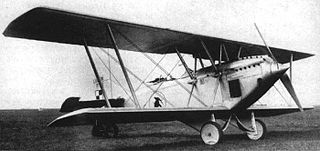
The Lublin R-VIII was a Polish bomber, reconnaissance aircraft and seaplane designed in the late 1920s by the Plage i Laśkiewicz factory in Lublin. It was the first in-house design of Plage i Laśkiewicz, and the first with the name Lublin.

The Douglas O-43 was a monoplane observation aircraft used by the United States Army Air Corps.

The Savoia-Marchetti SM.62 was an Italian single-engine maritime patrol flying boat produced from 1926. It served with the Regia Aeronautica and with a number of foreign users, and was licence-produced in Spain and the Soviet Union. Some of the Spanish aircraft were still in service during the Spanish Civil War
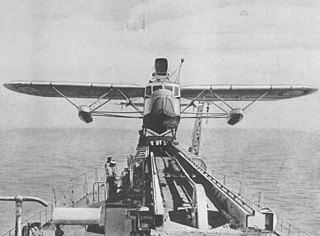
The Loire 130 was a French flying boat that saw service during World War II. It was designed and built by Loire Aviation of St Nazaire.

The Levasseur PL.2 was a French biplane torpedo bomber designed by Pierre Levasseur for the French Navy.
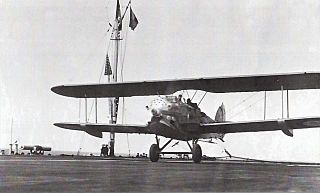
The Levasseur PL.4, aka Levasseur Marin, was a carrier-based reconnaissance aircraft produced in France in the 1920s.

The Levasseur PL.5 was a carrier-based fighter produced in France in the late 1920s, in response to the 1924 AMBC.2 specification issued by the Service Technique de l'Aéronautique (STAé). It was a conventional, single-bay sesquiplane that carried a crew of two in tandem, open cockpits. Like other Levasseur naval designs of the day, it incorporated several safety features in case of ditching at sea. Apart from small floats attached directly to the undersides of the lower wing, the main units of the fixed, tail-skid undercarriage could be jettisoned in flight, and the underside of the fuselage was given a boat-like shape and made watertight.

The Levasseur PL.6 C.2, also known as Levasseur VI C.2, was a two-seat fighter aircraft built in France in 1926 in order to meet a 1925 C.2 Service Technique de l'Aéronautique (STAé) specification,. Constructed along the same lines as Levasseur's naval aircraft of the same era, it was a conventional, single-bay biplane with seating for the pilot and tail gunner in separate, open cockpits. Flight testing of the prototype commenced in 1926, and it was exhibited at the Salon de l'Aéronautique at the end of the year.

The Levasseur PL.7 was a torpedo bomber developed in France in the late 1920s. It was a development of Levasseur's PL.4 reconnaissance aircraft and intended to replace their PL.2 then in service with the Aéronavale. It was a single-bay biplane of largely conventional design, but incorporating safety features for naval operation, including jetissonable main undercarriage units, a watertight, boat-shaped fuselage, and small floats on the undersides of the lower wings.

The Levasseur PL.10 was a carrier-based reconnaissance aircraft developed in France in the late 1920s. It was a conventional, single-bay biplane along similar lines to Levasseur's contemporary designs for the French navy, including a watertight, boat-shaped fuselage, small underwing floats, and undercarriage that could be jettisoned in flight in order to improve the changes of a successful ditching.
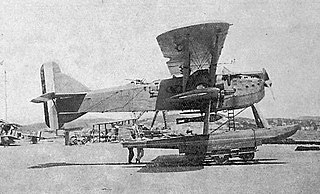
The Levasseur PL.14 was a torpedo bomber seaplane developed in France in the late 1920s. It was essentially similar to Levasseur's PL.7 carrier-based reconnaissance aircraft with the addition of pontoons. The design dispensed with the small underwing floats that formed part of the safety equipment of Levasseur's carrier-based aircraft of the period, but retained the boat-like fuselage. The wing was built to the 18.00-metre design originally developed for the PL.7 but ultimately rejected in favour of a shorter wing.
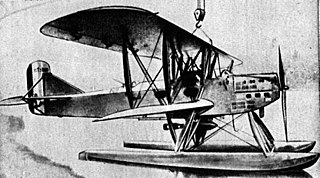
The Levasseur PL.15 was a torpedo bomber seaplane developed in France in the early 1930s. It was a follow-on design to Levasseur's PL.14 that had, in turn, been developed from the carrier-based PL.7. While the PL.14 retained the PL.7's boat-like fuselage, the PL.15 was a purpose-built seaplane with an all-new, slender fuselage.

The SNCAO CAO.600 was a French prototype twin-engined torpedo-bomber of the Second World War. It was intended to operate from two new aircraft carriers of the French Navy, but only a single example had been completed and flown when the surrender of France in June 1940 ended development of the aircraft.

The Levasseur PL.8 was a single engine, two-seat long-distance record-breaking biplane aircraft modified from an existing Levasseur PL.4 carrier-based reconnaissance aircraft produced in France in the 1920s. Levasseur built the aircraft in 1927, specifically for pilots Charles Nungesser and François Coli for a transatlantic attempt to win the Orteig Prize. Only two examples of the type were built, with the first PL.8-01 named L'Oiseau Blanc, that gained fame as Nungesser and Coli's aircraft.

Pierre Levasseur's first aircraft, the Levasseur PL.1, was a three seat tourer with a novel, simplified structure. One of only two Levasseur powered civil designs, the sole example was completed in 1922.
The Levasseur PL.400 was an artillery observation / liaison aircraft built by Société Pierre Levasseur Aéronautique in the late 1930s.
The Levasseur PL.3 AM3 was a carrier-based reconnaissance aircraft produced in France in the 1920s to fulfill a specification for a three-seat carrier-borne reconnaissance aircraft. The PL.3 AM3, a biplane of all-wood construction did not enter production and only the prototype was built.

The Levasseur PL.12 was an observation flying boat built by Levasseur in the early 1930s. It was a high-wing monoplane with a monocoque fuselage.

The Levasseur PL.200 was an observation seaplane built by Levasseur in the mid-1930s. It was a high-wing monoplane with a short, all-metal fuselage nacelle at mid-span, and a wing made of metal.
References
- ↑ "Levasseur PL 11 - Hydravion d'observation - Un siècle d'aviation française". Aviafrance.com. 2001-12-12. Retrieved 2022-08-31.